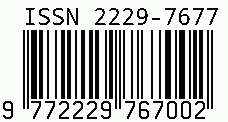
International Journal on Science and Technology
E-ISSN: 2229-7677
•
Impact Factor: 9.88
A Widely Indexed Open Access Peer Reviewed Multidisciplinary Bi-monthly Scholarly International Journal
Plagiarism is checked by the leading plagiarism checker
Call for Paper
Volume 16 Issue 3
July-September 2025
Indexing Partners



















AN ANALYSIS ON EMPLOYEE ENGAGEMENT TOWARDS HYBRID WORK CULTURE AND AI ENABLED WORKING ENVIRONMENT
| Author(s) | Dr.G.Balamurugan, M.Roobini |
|---|---|
| Country | India |
| Abstract | The research focuses on the changing dynamics of employee engagement in organizations that are embracing hybrid work patterns and artificial intelligence (AI) in the workplace. As companies are preoccupied with balancing on-site and off-site work, AI-powered tools have come into prominence for the optimization of communication, collaboration, and productivity. Through utilization of qualitative survey data and routine IT assessments, this research investigates the way such technical and organizational transformations impact employees' motivation, commitment, and sense of belonging. Flexibility, autonomy of digital work, perceptions of justice, and readiness for new technologies are some of the most significant factors that influence engagement in such environments. Findings identify both prime stimulants and most likely impedimental factors of engagement in AI-accompanied hybrid environments. From the research, it provides HR practitioners and managers with practical advice on how to sustain and stimulate engagement via ongoing digital transformation. It underlines the necessity to apply digital means of employee well-being and organization culture, in a bid to construct a resilient, flexible, and engaged workforce via a more technologically centered work environment. |
| Keywords | Employee engagement, hybrid work culture, artificial intelligence (AI). |
| Field | Business Administration |
| Published In | Volume 16, Issue 2, April-June 2025 |
| Published On | 2025-06-20 |
| DOI | https://doi.org/10.71097/IJSAT.v16.i2.6383 |
| Short DOI | https://doi.org/g9qxd4 |
Share this


CrossRef DOI is assigned to each research paper published in our journal.
IJSAT DOI prefix is
10.71097/IJSAT
Downloads
All research papers published on this website are licensed under Creative Commons Attribution-ShareAlike 4.0 International License, and all rights belong to their respective authors/researchers.

